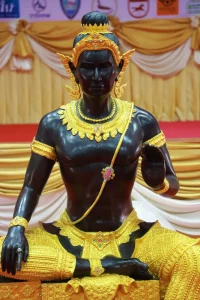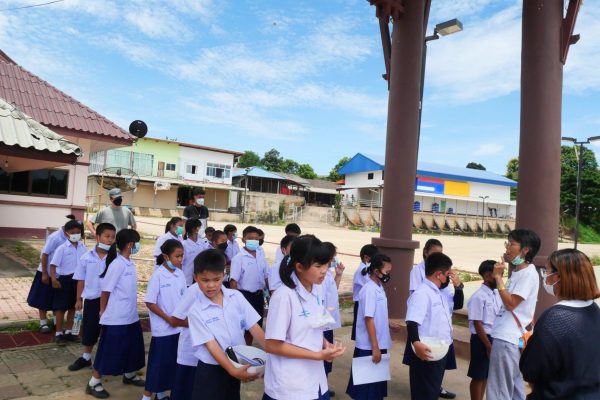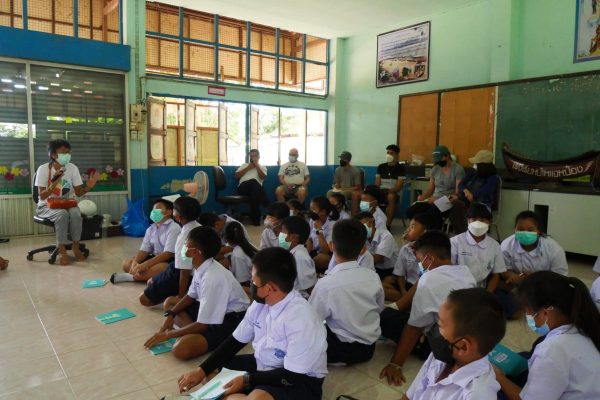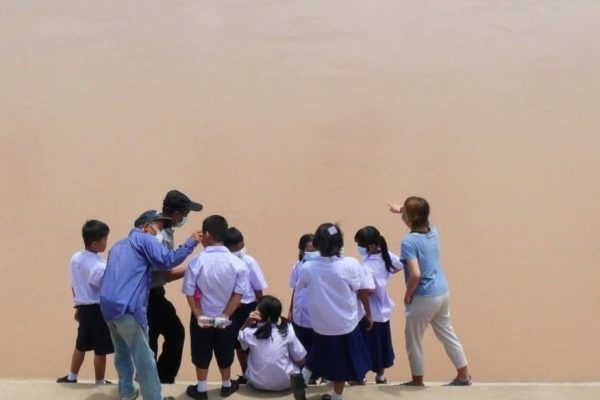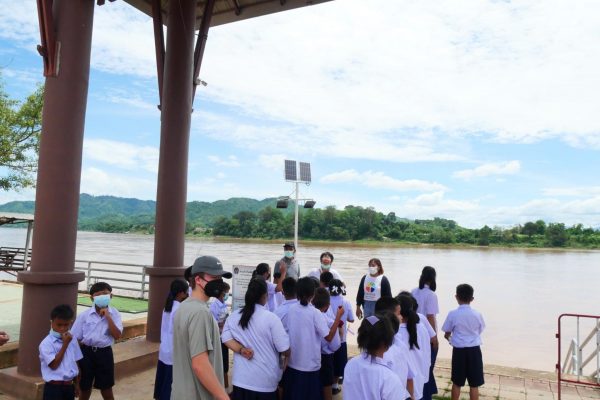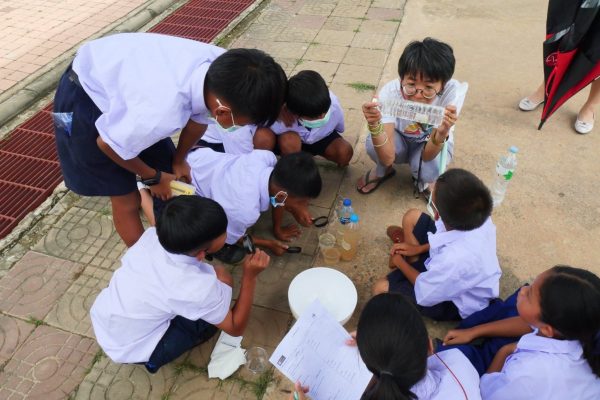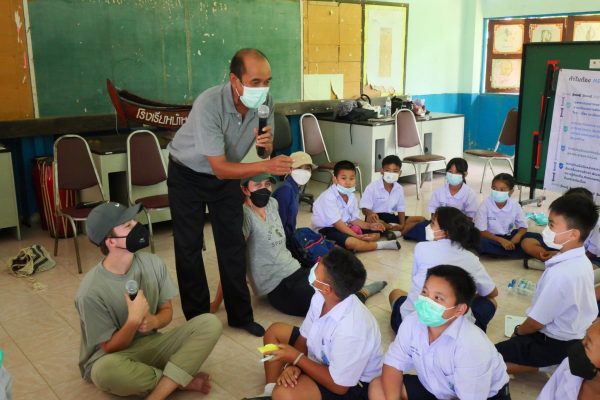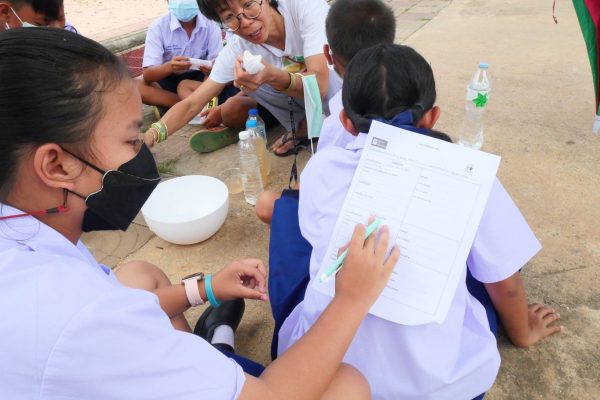Young students at Jampong School Learn about the effects of changes in the Mekong River and join together to paint dreams of the future.
On June 20, 2022 at 9:00 a.m., Mekong School Institute of Local Knowledge joined together with Lai Ngao Municipal School (Jampong School) to organize a storytelling forum for elders and youth in the community. This activity falls under the Mekong Youth Program, of which Jampong School is the 10th school to participate in the project. There were 24 primary school students from grades 4 through 6 in attendance.
The day started with introductory games and activities to clarify the project. Then the students heard stories from the knowledgeable elder from the Ban Jampong community, Mr. Somsak Chaimongkol, and from the Mekong school’s “Khru Tee” – Niwat Roykaew who is chairman of the Rak Chiang Khong group and Asia’s only Goldman Prize winner in 2022.
Khru Tee said:
“Today will be very beneficial to us, because we live near the Mekong River. Today we will learn how the water of the Mekong is dirty. We will measure the Mekong River with scientific instruments. First of all, I will tell about the legend of the river that tells about the two Nagas that live in a high alpine lake. One naga caught an elephant, so he shared it with his friends. Another Naga got a hedgehog and also shared it with his friends, but it was so small that he could only share a little bit. So his friends thought, why did my friend divide it like this? The fur is big, and the meat was divided into small portions. So, they fought until Phaya Thaen* came to know of the problem. Phaya Thaen told them that they had to dig up the soil to reach the sea, and that whoever wins will be rewarded with a Mekong catfish and the bottom of the waterway will be gold. As a result, these nagas dug up the rivers that would become the Mekong and the Salween Rivers. As for the Mekong River, when it meets the cliff, it turns and turns until it reaches the sea first. Therefore, the Mekong River was rewarded with the Mekong catfish and became the golden river.”
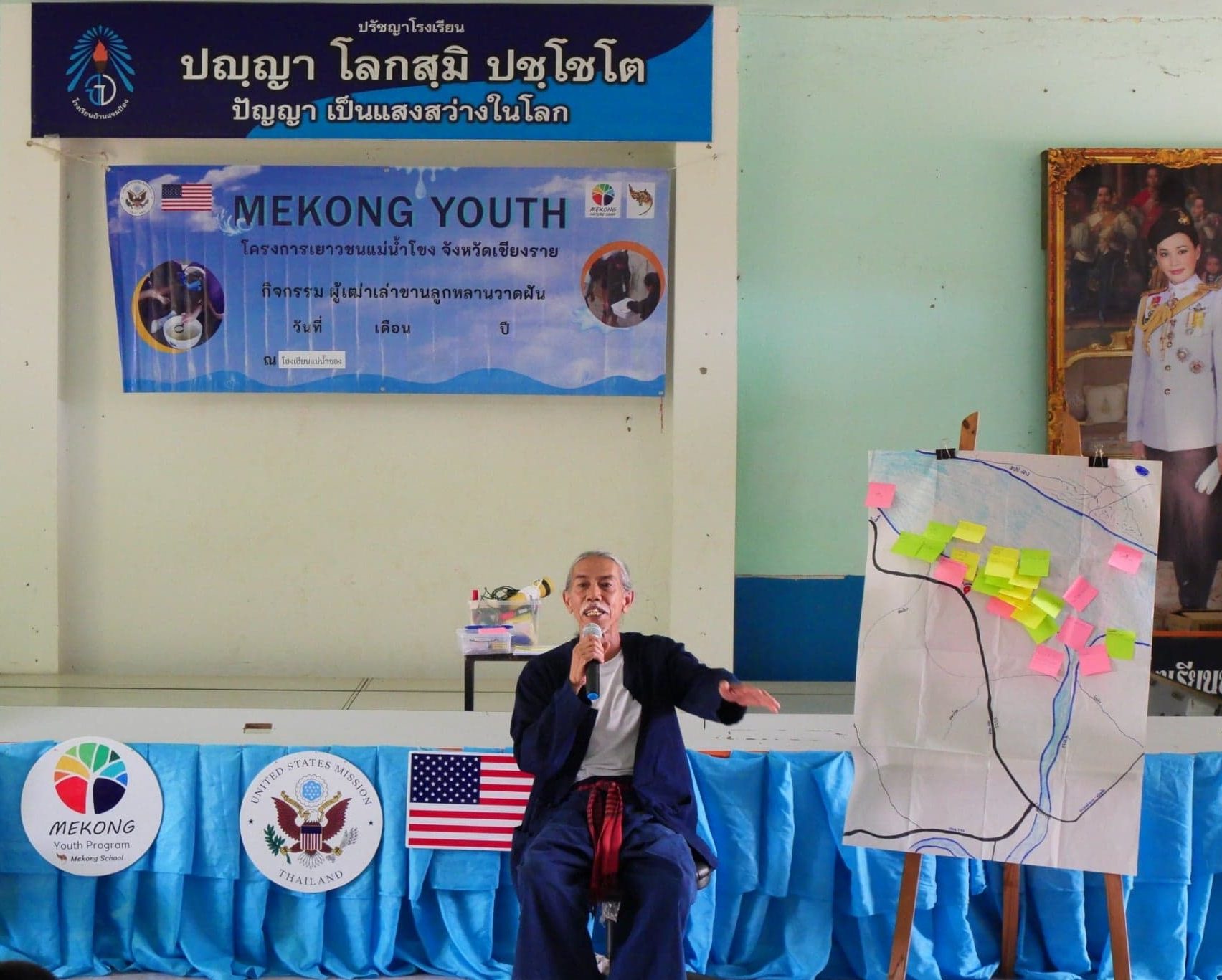

Uncle Somsak Chaimongkol, 72 years old, who is the knowledge keeper of Baan Jampong said:
“I was born in Baan Jambong. Then I left and grew up at Tambon Ngao, and went to study in Chiang Rai until the end of M.3, but I did not continue to M.4. Instead I returned to live in the village, making my livelihood by fishing and farming. Later, when changes started to occur in the Mekong River, we came to raise fish and started a restaurant. But, I still managed to fish for a living until I raised my three children to become policemen and a nurse. Now, the price of fish is high, but there are not many to be caught. Sometimes I go for fish or shrimp, and all day I can’t even catch 100 grams of fish. Nowadays, there are fewer fishermen and fishing does not follow the seasons as it did before. The price of oil goes up and down abnormally…”
Khru Tee continued,
“The changes in the Mekong River started in 1996-1997 when the first dam was built, the Manwan Dam in China. Villagers saw sudden dryness when the first dam was launched. In 2003, there was the Dachao Shan Dam and the water began to raise and lower abnormally. In 2008 there were flash floods caused by the release of water by the Jinhong Dam or Chiang Rung Dam. There was a heavy rain above the dam and the water was released suddenly. In 2010, the river dried up a lot after the Xiaowan Dam was built. It is more than 290 meters tall, and this dryness caused boats to be stuck at the rapids before Luang Prabang. Currently, there are over 11 dams in the upper part of the Mekong river. The change in the water level from dams is irregular, fluctuating daily and weekly, causing the river bank to collapse. As a result, the government has had to spend huge sums of money to build barriers across the banks of the Mekong. Another effect is the reduction of flooding of the tributaries and wetlands. The fish are unable to spawn and are disappearing. In the dry season, the water level was so high that the birds were unable to lay their eggs on the beaches of Don Klang Khong Island. Many species of fish have disappeared.”
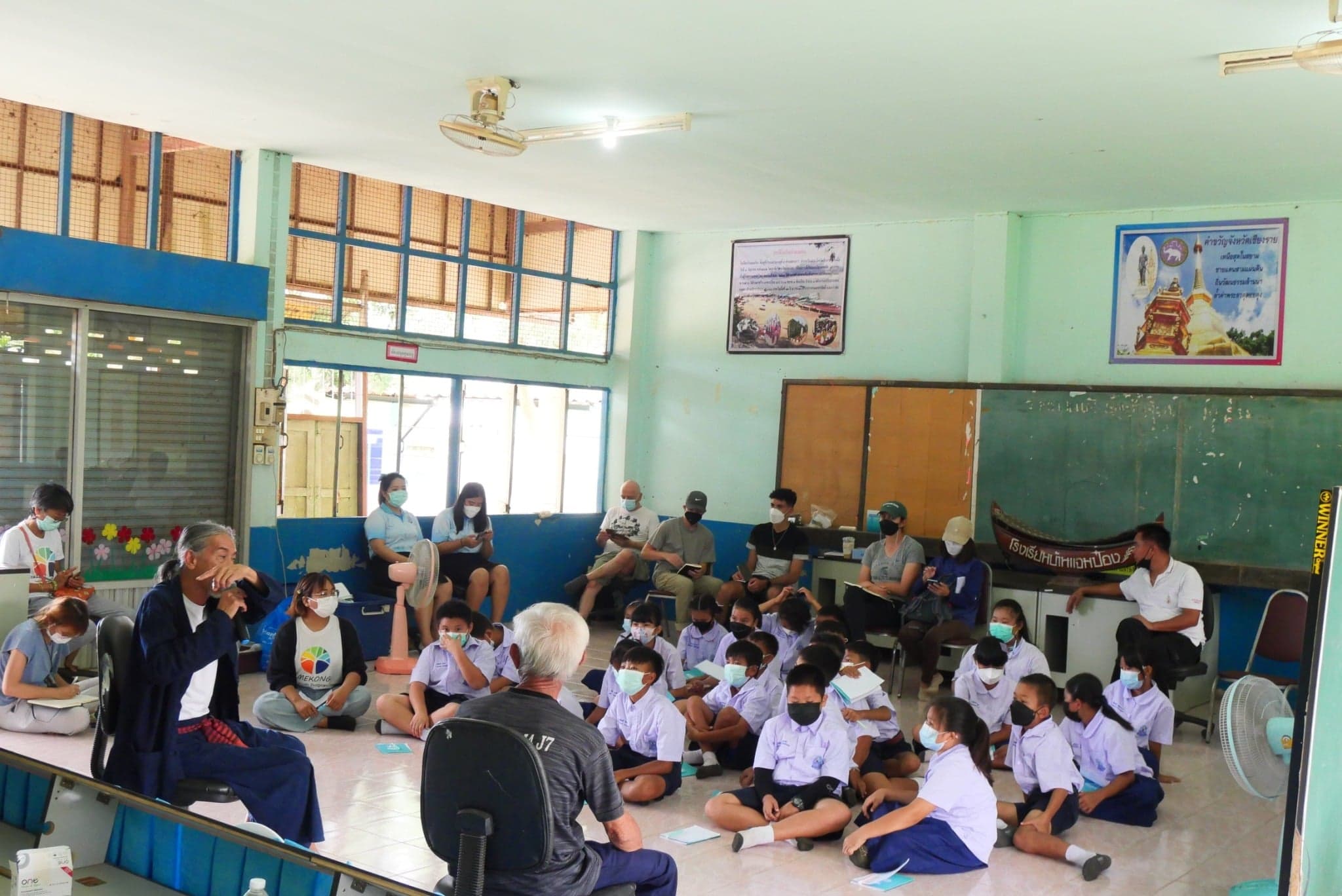
When the elders had finished telling stories of the Mekong River, the students were able to learn and practice measuring water quality. The students split into three groups and collected water samples from drinking water in the school cafeteria, from the school pond, and they went down to collect water from the Mekong River at the Jampong Pier, in Lai Ngao Subdistrict, which is a short walk from the school. Once the measurements were made, the students presented the results and then discussed the analysis process and their findings. The results showed that sediment values in the school’s drinking water were higher than from the pond water and the water from the Mekong River. In the case of the Mekong River, the color observed by students is browner or more cloudy than the color of the pond and drinking water. But, the sediment value of the Mekong River water was not high. The students thought that it was strange that the Mekong River is still more cloudy, but where has the water-sediment gone? The students and their mentors reflected on what the elders said. In addition to the dam holding water, they realized it also stores sediment, making it so that the lower river is clear and blue without any sediment in the dry season.
Later, the youths together drew a map of the Ban Jampong community. They drew where the good things about Ban Jampong are. After this, the children then did a free dream drawing activity to process the day’s learning as a picture independently. The children looked to draw a window into their dreams and then shared them together merrily.
* Taen or Phi Taen in Lanna culture is the highest spirit of the sky or the heavens. The word Taen has been interpreted by scholars to mean “Tian” in Chinese, which means sky or heavens. As for the word Phaya, it means “the king” in the Lanna language or Kham Muang. Phaya Taen is therefore the king of the heavens.
